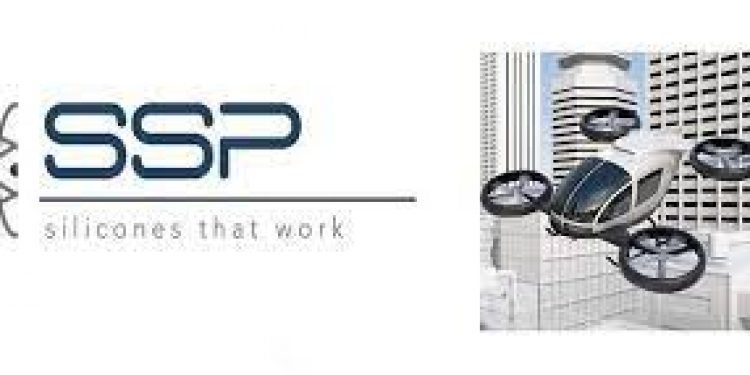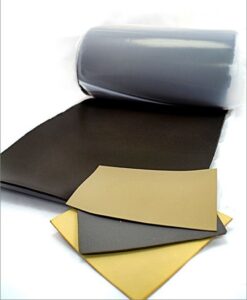eVTOL EMI shielding provides shielding against electromagnetic interference (EMI) in electric vertical take-off and landing aircraft. SSP makes eVTOL EMI shielding materials and aerospace silicones. Learn where they’re used in drones.
What is the Global Market for eVTOL Aircraft?
The global market for eVTOL aircraft will soar to $14.35 billion in 2025, reach $18.92 billion in 2026, and skyrocket to $51.18 billion in 2031, according to a report from The Business Research Company. Archer Aviation, a leading designer of electrical vertical take-off and landing (eVTOL) vehicles, recently shared plans to open a 650-aircraft manufacturing facility by the end of 2024. It’s just one in a series of recent Archer announcements that highlights why the eVTOL industry needs EMI shielding silicones and aerospace silicones.
eVTOL EMI Shielding for Production Aircraft
Since November 1st, Archer has unveiled its eVTOL production aircraft and announced its first eVTOL route with United Airlines. Archer’s eVTOL aircraft, the Midnight, will carry passengers to and from Newark Airport to a heliport in downtown Manhattan. The Georgia-built Midnight is also expected to fly between airports in Florida and downtown city centers like Miami and Fort Lauderdale. With seating for five and a range of 60 miles (100 km), the Archer Midnight is ideal for successive short hops.
Although the eVTOL industry is innovative, the Archer Midnight will use today’s battery technologies and leverage a development strategy that Aviation Today describes as “realistic”. By sourcing components and systems that are used on certified aircraft, Archer will reduce its certification risks and its development timelines and costs. Examples of this supply chain strategy include recent agreement to use Garmin’s G3000® integrated flight deck and Molicel lithium-ion battery cells aboard the Midnight.
eVTOL Powertrains and Power Control Units (PCU)
Production of the Archer Midnight is still distant, but the company has already selected more than 64% of the suppliers for its eVTOL aircraft’s bill of materials (BOMs). Yet, plenty of supplier opportunities still exist. “There are some parts where we have not found good enough alternatives that can help us meet our mission”, says Adam Goldstein, Archer’s co-founder and CEO. One of these areas is the powertrain, which includes the power control unit (PCU).
According to DENSO Corporation, an e-mobility supplier that is making the e-motor for another eVTOL company, a PCU consists of an inverter to power the motor, a boost converter to increase the voltage, and a DC/DC converter to lower the voltage. During eVTOL acceleration, the PCU converts electric power to AC. Voltages and currents can cause electromagnetic interference (EMI) in nearby avionics, but EMI gaskets made of electrically-conductive silicones could be used to seal and insulate PCU enclosures.
eVTOL EMI Shielding Silicones and Aerospace Silicones
In addition to EMI shielding silicones, eVTOL aircraft need aerospace silicones that are fully tested to specifications like AA 59588. Depending on the specific alphanumeric class, AA 59588 silicones for seals and gaskets can provide high-temperature or low-temperature resistance or flex-fatigue resistance. “Thermal management is very important on an eVTOL aircraft,” says Dr. Geoffrey Bower, Archer’s Chief Engineer, “for maintaining onboard systems within their operating temperature limits, even at extreme conditions”.
Specialty Silicone Products (SSP) makes aerospace silicones and EMI shielding silicones that meet demanding specifications, have been independently tested, and use components with clear histories of traceability. If you’re part of the eVTOL supply chain, we invite you to learn more about how we can serve your industry. Contact us online or email Dominic Testo, SSP’s Business Development Manager.





